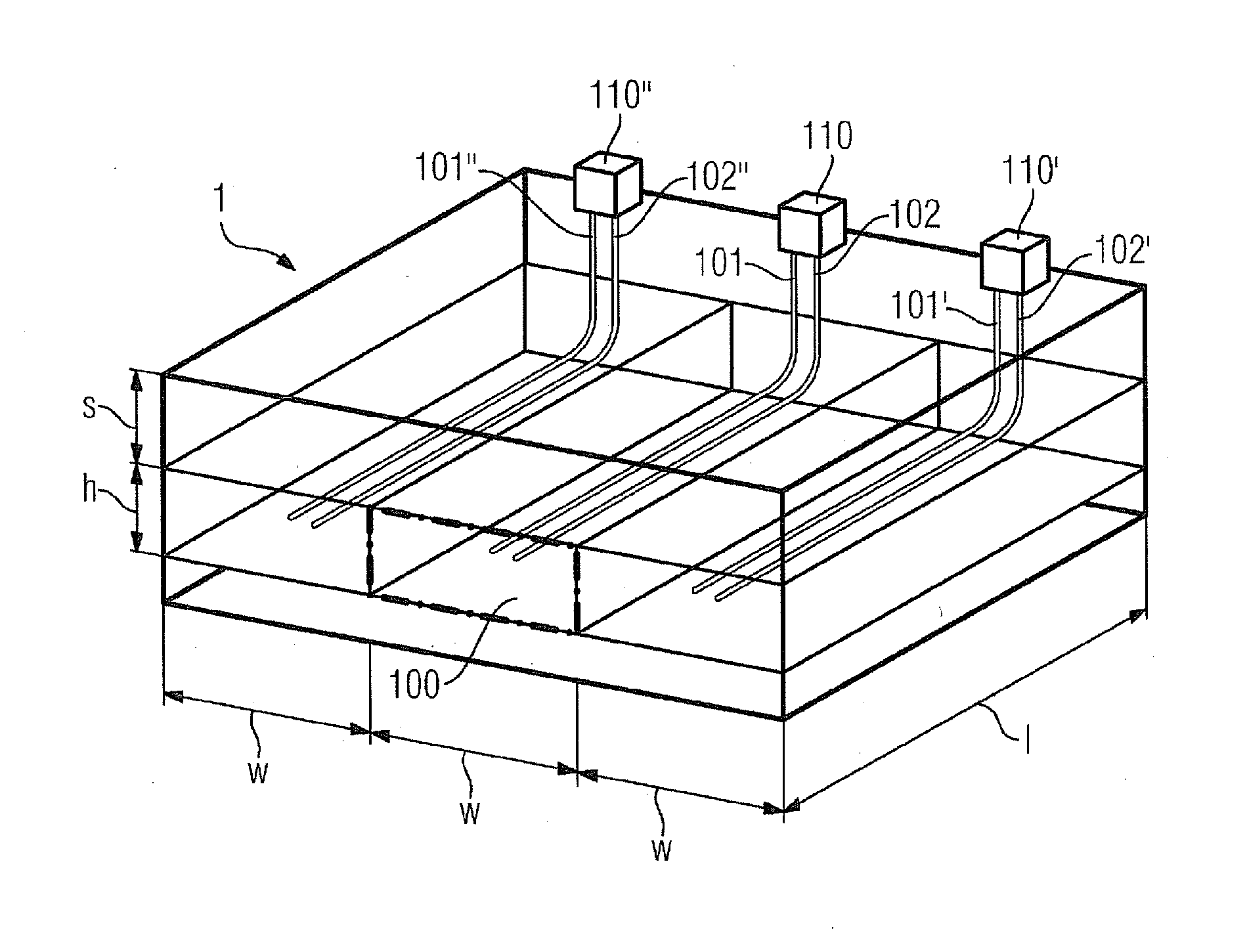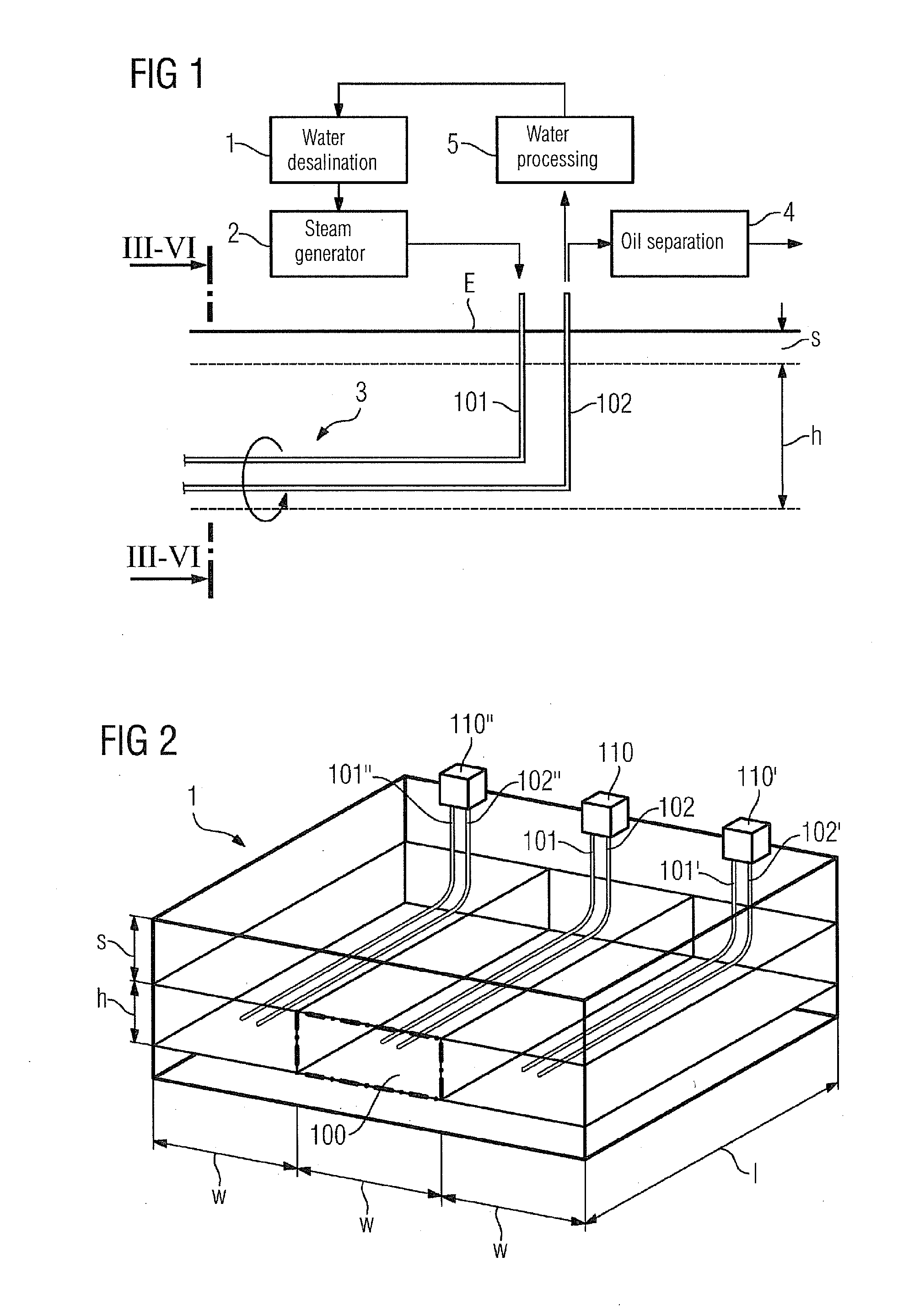Method and Apparatus for In Situ Extraction of Bitumen or Very Heavy Oil
a technology of in situ extraction and bitumen, which is applied in the direction of fluid removal, insulation, and wellbore/well accessories, etc., can solve the problems of high cost of horizontal boring and piping, economically limited quantity of bitumen can be tapped, etc., and achieves low cost, high yield, and reduced viscosity
- Summary
- Abstract
- Description
- Claims
- Application Information
AI Technical Summary
Benefits of technology
Problems solved by technology
Method used
Image
Examples
Embodiment Construction
[0018]In FIG. 1 a thick line E shows the ground surface, below which an oil sand deposit is located. Generally a superstructure of rock or other material is present below the ground surface, followed by a seam in the form of an oil sand reservoir at a predetermined depth. The seam has a height or thickness h, a length l and a width w. The seam therefore contains the bitumen or very heavy oil and is referred to below as the reservoir 100. With the known SAGD method an injection pipe 101 for steam and an extraction pipe 102, also referred to as a production pipe, are routed horizontally on the base of the reservoir 100.
[0019]FIG. 1 shows an outline of a method according to the prior art. Externally, i.e. above the ground, means are present for generating steam, which will not be examined in detail in the present context. The steam heats the area around the injection pipe 101 and reduces the viscosity of the bitumen or very heavy oil present in the oil sand. In the extraction pipe 102,...
PUM
 Login to View More
Login to View More Abstract
Description
Claims
Application Information
 Login to View More
Login to View More - Generate Ideas
- Intellectual Property
- Life Sciences
- Materials
- Tech Scout
- Unparalleled Data Quality
- Higher Quality Content
- 60% Fewer Hallucinations
Browse by: Latest US Patents, China's latest patents, Technical Efficacy Thesaurus, Application Domain, Technology Topic, Popular Technical Reports.
© 2025 PatSnap. All rights reserved.Legal|Privacy policy|Modern Slavery Act Transparency Statement|Sitemap|About US| Contact US: help@patsnap.com



